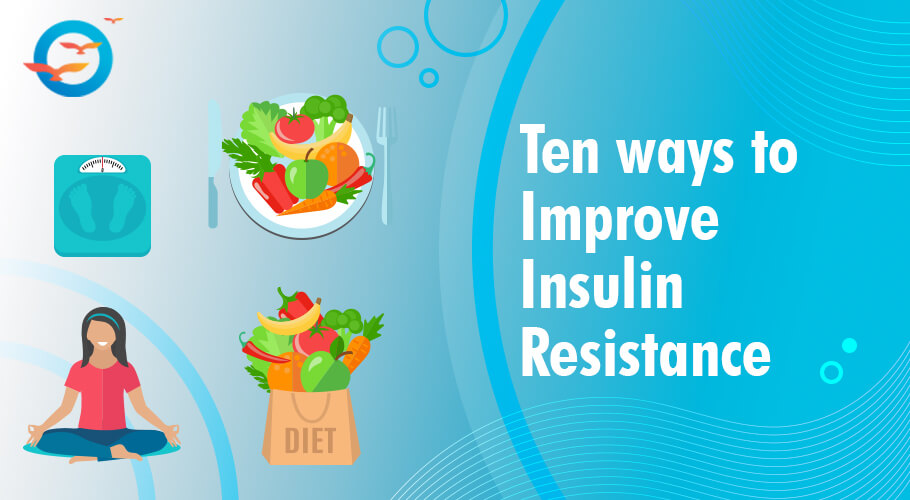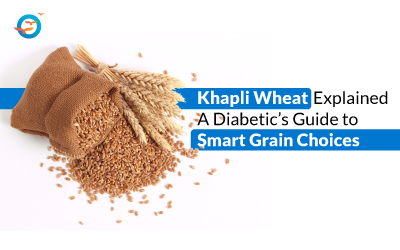How to Improve Insulin Resistance?

If you didn’t know it by now, here’s the truth about diabetes: it is not a disease but a symptom. And the root cause of diabetes is…(drum roll) insulin resistance.
This basically refers to the body’s resistance to the insulin produced in its own pancreas. When this happens, the insulin in the body cannot perform its function of enabling glucose in the blood to enter the muscle cells and it thus collects in the bloodstream, leading to the most visible sign of diabetes: high blood sugar.
Over time, this high blood sugar begins to affect almost every organ in the body—from nerves and skin to kidneys, legs and eyes. The only way to control or reverse this is by lowering insulin insensitivity.
For a long time, medical science held the view that this could not be done to any degree of permanence. However, after more than 12000 confirmed diabetes reversals, and tens of thousands more who have got their BSL under control and have reversed their diabetes and diabetes-related disorders to a certain degree, we, at Freedom from Diabetes (FFD), know that insulin insensitivity can be improved.
Way to reduce Insulin resistance
1. Get rid of excess weight, especially belly fat
Fat around the midsection, also known as visceral fat, is known to increase insulin resistance. Fat inside the muscle cells—aka intramyocellular lipid—blocks the functioning of insulin and keeps glucose outside the cells.
Reducing excessive weight is a key factor in reversing this effect and keeping your insulin sensitivity in the normal range. Unhealthy diets, insufficient exercise and stressful lifestyles all contribute to weight gain. Taking control of these factors will make a definite difference.
2. Eat low carb, low GI foods
Foods are ranked by the speed with which their carbohydrate content turns into glucose and is absorbed into the blood. This is referred to as their Glycemic Index rating. Anything above 50 is considered high and should be avoided or eaten in small quantities.
Foods containing simple sugars, like confectionery, fruit juices, colas, etc. have a very high GI rating, which means the body converts the excess glucose into fat. Avoiding these foods is a must to get your insulin insensitivity under control.
3. Get sufficient micronutrients in your diet
We all know the importance of consuming the right proportion of macronutrients: carbs, protein and fats. But there is another essential food group that often goes ignored: micronutrients. These include enzymes, anti-oxidants, anti-inflammatories, flavonoids, etc. that are responsible for a variety of functions, from neutralizing harmful free radicals, to ridding the body of inflammation.
Micronutrients are necessary to build a healthy gut biome…so essential bacteria can flourish, ensuring your body is flush with a multitude of Vitamins needed to keep it ticking in tip top shape. Uncooked—but properly cleaned—fresh greens, some fruit, colorful vegetables, herbs, and many spices are rich in these micronutrients. Ensure you get a heaping serving of these micronutrients in your diet.
4. Include herbs and spices in your diet
There are many herbs and spices that are known to have powerful healing properties. Ayurvedic preparations use many of them in a variety of medications. Fenugreek, turmeric, ginger and garlic are all good at improving insulin sensitivity. Fenugreek seeds (aka, methi seeds)
Water in which fenugreek has been left to soak overnight is known to have a regulatory effect when consumed on an empty stomach. The seeds can also be consumed; they are high in soluble fiber and can be eaten whole or added to salads and soups
- Turmeric.
Curcumin, the active component in turmeric, is a powerful antioxidant and anti-inflammatory. It is believed to reduce free fatty acids, and glucose in the blood.
- Ginger
Studies show that ginger, an active element in ginger, has a salutary effect on muscle cells’ receptors, effectively promoting sugar intake and lowering BSL.
- Garlic
Garlic has long been known for its anti-oxidizing properties; it also seems to improve secretion of insulin and increasing insulin sensitivity
In addition to these spices, there are many more that can be added to your meals to improve insulin sensitivity. For more information on which spices you should add to your diet.
5. Eat fiber-rich foods
Broadly, there are two categories of fiber—soluble and insoluble—and both are good for you
- Insoluble fiber helps waste move through your bowels, thus reducing the risk of constipation, and keeping your digestive tract healthy
- Soluble fiber has many benefits, including lowering harmful cholesterol (LDL) and improving insulin sensitivity.
- Soluble feeds the helpful bacteria in the gut, which is also known to improve insulin sensitivity.
- Foods like legumes, vegetables, nuts, and seeds are all rich in fiber.
6. De-stress
We all know that stress is a killer. Yet we unknowingly put pressure on our body by adding to our own stress. Stress releases cortisol, which promotes fat generation. It also triggers cravings for food—usually the unhealthy variety, and compromises sleep quality—further increasing stress levels.
Mindful exercises, meditation, breathwork, physical fitness, hobbies, socializing…are all proven ways to dissipate stress. Try making time for stress management, and you should see a marked improvement in your insulin sensitivity too.
7. Get plenty of sleep
We routinely underestimate the connection of sleep with health. Getting 7-8 hours of deep restful sleep is known to improve every aspect of health, from cogitation to physical rejuvenation.
On the other hand, sleep deprivation increases the risk of infection, cardiac problems, and insulin insensitivity—and all the many disorders that this brings, including diabetes, high BP, high triglycerides, etc. There are many ways to get your share of zzz’s and we’ve shared the ones that work best in our article: breaking the obesity sleeplessness cycle. Read it here.
8. Stay hydrated
Water is necessary for life itself. From health, perspective water offers several unmatched benefits. It is excellent to subdue hunger cravings; it improves digestion, and most important it is necessary to metabolize fat—a process called lipolysis.
Excessive thirst, which is a visible sign of diabetes, is nothing but the body demanding water to flush out the excess glucose. But don’t wait for this to happen, get your daily liters—two for women, three for men—a day.
9. Exercise
When you exercise your muscles demand glucose for energy, this pulls in glucose from the blood into muscle cells, effectively lowering BSL. That is the main reason, walking has been traditionally promoted as the gold standard for diabetic exercise. But unless done at a certain pace and intensity, walking is just physical activity and the body quickly learns how to accomplish this using the least calories, which kind of defeats the purpose.
So while walking is always good, supplement or, better yet, replace it with exercises like stair climbing, and the revolutionary Nitric Oxide Dump exercise that we, at FFD advocate. Exercise also triggers a release of endorphins—sometimes referred to as the happy hormone. These endorphins are also great stress relievers.
10. Try resistance training
It is simple math: the bigger your muscles the more calories they need just to stay alive. This makes resistance training invaluable in burning off excess glucose and improving insulin sensitivity.
Don’t like the gym? No problem, there are many bodyweight movements that have the same effect as weight training. Push-ups, dips, pull-ups, resistance bands…are all examples of easy movements you can do just about anywhere with no equipment.
Yoga is also a great way to get fit. Yoga is indeed an all-in-one solution. In addition to balance and flexibility, it incorporates movements like the Suryanamaskar which are cardiovascular exercises, and ones like the handstand, crow pose, and peacock pose that are very effective in building strength too, and many meditative poses. Pranayama breathing exercises offer a great way to round off your exercise sessions and dispel accumulated stress too.
The content in this article is not intended to take the place of medical advice. Please consult your doctor before making any lifestyle changes that could impact your health.
FAQs
How I can increase improve insulin resistance?
Effective ways to improve your insulin resistance include Balanced Diet, include herbs and spices in your diet, Eat fiber-rich foods, Regular exercise, Managing stress, get plenty of sleep, maintaining a healthy weight, and Stay hydrated.
How can diet help boost insulin sensitivity?
A diet rich in fiber, healthy fats, and low in refined sugars can improve your insulin sensitivity.
What types of exercise are best for enhancing insulin sensitivity?
Walking is always good, along with stair climbing and the Nitric Oxide Dump exercise, which is known to boost insulin sensitivity effectively.
How does weight loss affect insulin resistance?
Reducing excessive weight is a key factor in reversing this effect and keeping your insulin sensitivity in the normal range.
What foods repair insulin resistance?
Eat fiber-rich foods, legumes, vegetables, nuts, and seeds are all rich in fiber. Also you can add herb herbs and spices in your diet.
Can stress impact insulin resistance?
Yes. We all know that stress is a killer. Chronic stress can worsen insulin resistance, so managing stress through relaxation techniques is important such as Mindful exercises, meditation, breathwork, physical fitness, hobbies, socializing.
How often should I exercise to improve insulin resistance?
You have to do 2.5 to 5 hours of moderate exercise each week, like walking or cycling, and also include some strength training for the best results.

